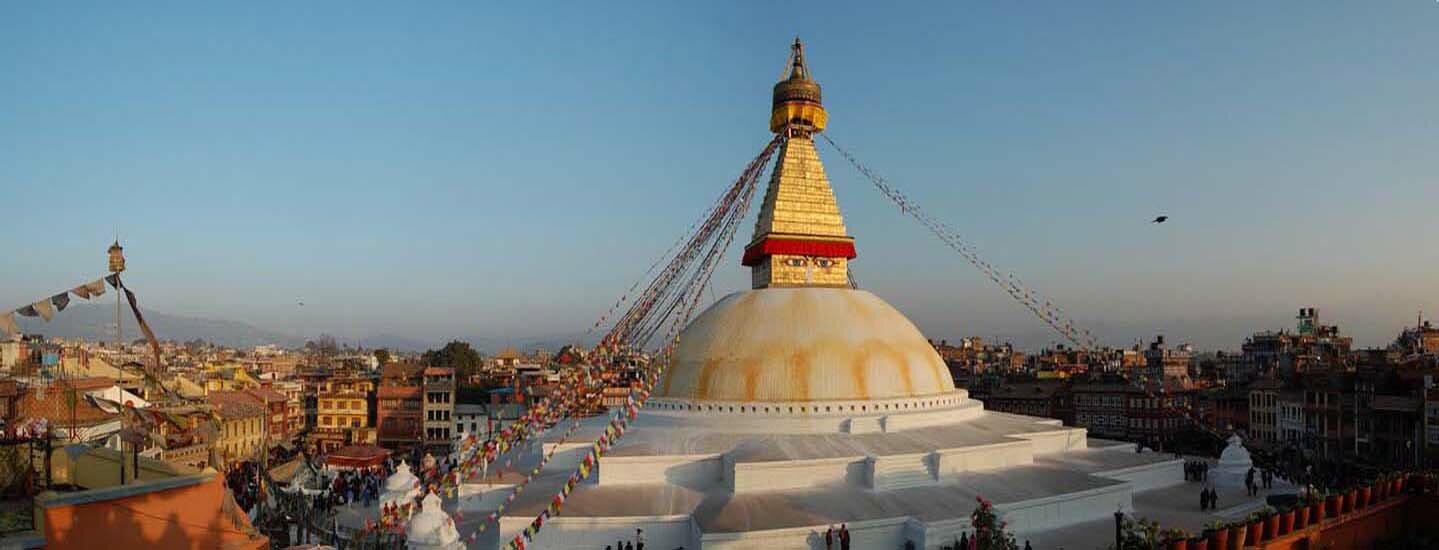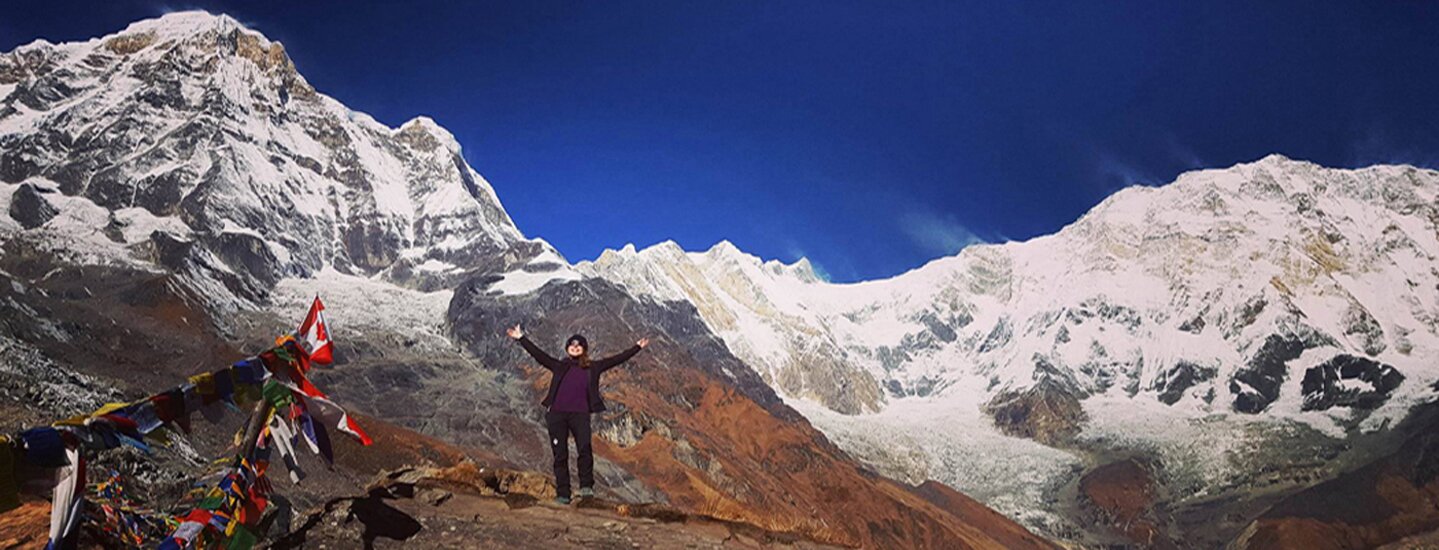Trekking is a recreational activity that facilitates people who want an outing for several days, hiking through rustic and off the beaten trail, with a simple objective to entertain that may also entail learning something new. Quoting encyclopedia definition, trekking is a form of walking with a backpack that is done with certain objective of exploring new worth visiting places and enjoying the scenery simultaneously. Trekking is best done in the unadulterated wilderness, where infrastructure can be almost basic.
What is the requirement for a trekking?
A travel lover is a trekker and there is no any qualification required to do trekking. Having that mentioned, a certain level of fitness is always helpful. And in the higher altitude trekking, above 3500m, the fitter the better because extra care is inevitable in higher elevations. Therefore anyone with walking ability and attitude for travel and adventure can enjoy the euphoric thrills that the Himalayas and trekking destinations in Nepal provides. The trekking types vary in terms of their length: trekking from a couple of days to months can be organized. Short treks are best recommended for the first timers, young and amateur trekkers and elderly people who has less experience or are unable to walk as required whereas long treks are designed for experienced and able adventure lovers. However, there is never a strong crystal clear constraints regarding the age group. All kinds of people can trek to enjoy the adventure and thrill which come along with trekking. At Himalayan Wild Treks, we welcome men, women, families, students, and professionals from across the world and we ensure all kinds of travelers enjoy, spend memorable time and feel the adventure in the trekking they go on. Travelers can inquire us both either for individual tour or for a group tour. Even the individuals can themselves organize a group and approach Himalayan Wild Treks for a successful trekking organization. The trekking gear, including everything will be arranged by the company and it is always made sure travelers are stress-free, happy and joyful in the trekking from the beginning to the end.
What is the best time to travel/ Trekking in Nepal?
Trekkings in Nepal are generally operable throught the year, however, figures show that vast majority of travelers across the world visit Nepal during October and December due to the fact that the weather tends to be clear allowing the mountain views, since morning till evening. The weather in Nepal goes dry till April and March whereas January and Fenruary are extremely cold and nights have sub-zero temperature, however, the advantage of these times are that travelers can enjoy comparatively better peace and tranquility as the traffic is remarkably thin. Late spring brings rhododendron and several other flower blossoms in the hills of Nepal, proving itself the best time to enjoy the natural beauty in addition to breathtaking mountain views. From the beginning of May, humidity increases with the monsoon rains and mountains remain clouded most of the time. September, October and November in the Autumn and March, April and May in the Spring are considered to be the best seasons for trekking in Nepal.
Why you need a GUIDE
You maybe well experienced, fit and strong traveler and probably, you might have traveled across the world alone, however for security reasons as well as due to the legal constraints, it is a must for you to have a trekking guide with you. If you are planning longer trekkings in Nepal, especially one that includes visiting wilderness, you will need to depend on trekking agencies, who organize the trekking for you, which means they will hire a guide, kitchen staff and porter for you. Organize trekking is also called a camping trek,which is inevitable for long trekking to off the beaten areas. You will certainly find an information online regarding mountains and places you visit, but our guides equipped with updated knowledge about the detailed information will provide you with much better information regarding the areas you visit. Moreover, having a guide with you means you have better chances to understand and learn and enjoy as the guide is also a translator for you. In the organize trekking, travelers have to bear the expenses of the staff hired for the entire trekking period. Our staffs and guides are certified professionals from the Government of Nepal.
Age factor regarding trekking in Nepal
There is no constraints regarding age when it comes to trekking in Nepal. Trekking requires a great deal of walking in the wilderness filling lungs with fresh air filled with oxygen. Trekking is probably the best exercise for fitness and other health benifits. All kinds of trekkers, from children to elderly people are found on the trekking trail enjoying the walk with a backpack. If you are a first timer, we suggest you start with easier and shorter treks before go for longer and more complicated ones.
Safety and Security
There are cases in which solo trekkers without a guide or a crew getting into complexities. We are of the opinion that trekking in the remote Himalayas in Nepal without a guide or a crew often results in difficulties of different kinds. We are governmentally licensed, endorsed and responsible trekking agency that honestly takes the full responsibility of you to ensure that you enjoy the trekking joyously without sense of insecurity. We are teamed up with governmentally licensed staff and manpower with the only objective of helping you make your journey successful and memorable.
The most favoured time for trekking in Nepal
Nepal is geographically a diverse country. It has got dramatic landscape ranging from plain areas of Terai to the the highest peak in the world, Mt. Everest (8848m). Nepal is probably one of the coutries that has the best to offer while it comes to trekking and expedition. Normally all of the four seasons are suitable for trekking in Nepal. However, Autumn Season ( October to November ) and Spring Season ( February to April ) are most favored by the majority of the travelers. Some short tea house treks can be successfully done during the winter and monsoon seasons as well.
Usages of gadgets on the trekking
The use of gadgets like smartphones and cameras are feasible in Tea House Trekkings as this kind of trekking involvings sleeping in the lodges and hotels, where they have internet connection and wifi. Use of electricity has been widespread even in the remotest trekking destinations in Nepal. You can bring your personal gadgets and cameras along with you to take pictures and contact your friends and relatives. But if you are doing a camping trekking then you will have to camp in complete wilderness most of whose part has neither electricity nor internet is available. However, once you get to the developed areas, you can drop into hotels where you can charge them for the further use.
Walking hours a day
While you are trekking in the mountains, to be physically fit and able is one of the basic requirements. The hours of walking depends basically one what grade of trekking you are doing. Easy trekkings consist of four to five days of walking a day while strenuous and challenging treks require seven to eight hours of walking per day which means we will be walking approximately 9 km to 18 km each day. As for the strenuous trekkings, there will be arrangements of acclimatization days, when you can opt for taking rest so as to allow yourself to adapt to the atmosphere with lessening oxygen.
Dress code and shoes for the trekking
The clothes you wear during the trek differs according to the type of trekking. If you are doing an easy trekking, which involves walking in the low-altitude, light trekking trousers, t-shirts and light jackets are recommendable. A backpack and walking stick are also inevitable appliances. As for the challenging trekkings, you need warm and thick clothes and a windproof jacket is a must. Regarding shoes, you may bring shorter trek tennis shoes or snickers whereas for longer treks, you need altitude boots that you can wear in the cold. The kinds of boots that wrap your ankle are recommendable as they protect your ankle from getting twisted on uneven paths of the trekking. Get yourself a pair of warm, durable and comfortable boots.
Sickness on the trekking
There might be times when you fall sick on the trekking, especially becuase of the altitude, which is commonly called 'altitude sickness'. The level of oxygen gets thinner as you ascend higher because of which problems in breathing might appear unless you are used to the way of atmosphere. Therefore acclimatization in higher elevation trekking is highly recommended. The possibility of falling into sickness increases if you suddenly ascend to higher levels without taking sufficent time to adapt yourself to the atmosphere, which apparently menas you will have to trace back down to lower levels if you fall sick and take rest until you don't feel fine to proceed ahead. In the critical cases, you will be airlifted by a rescue helicopter. Normally if and when you feel dizzy, have a headache and suffer palpitations, you will have to immediately walk back to lower elevations to take an acclimatization.
Checklist of the things
As compared to other countries travel in Nepal is relatively easier than it is in other countries. For instance, you can get your visa on your arrival at the Tribhuwan International Airport and from the next day onwards, you can start your journey. For a successful trip, planning plays an important role and it is the same when it comes to travel in Nepal. It is important for you to plan your trekking quite early. The following is the checklist provided to you to help you prepare your checklist.
- Choose a governmentally endorsed legal trekking agency to make necessary inquiries before the booking of the flight.
- Fix the date of your trekking and flights.
- Get your health checked, if possible, to make sure you are physically able to trek.
- Prior to your arrival in Nepal, purchase your travel insurance from a reliable company.
- Make sure you have bought clothings and equipments necessary for your travel.
- Check the needed clothing and equipment for your travel and trekking in Nepal.
- Nepal visa can be handed to you without you having to go to Nepal Embassy.
- Do not forget to carry valid passport, 3 passport photographs necessary to acquire permits, travel insurance, airline tickets luggages.
- Remember to carry your credit card and other necessary payment cards.
- Keep your friends or relatives informed about yourself.












-866.jpg)
.png)




.jpg)






